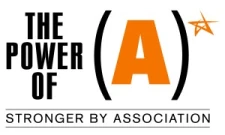Free? Hold on a Minute.
8 April 2013 Leave a comment
A few years ago I moderated a workshop on Chris Anderson’s book, Free and its implications for associations at the Digital Now conference. (That presentation can be found here.)
Anderson’s thesis was based largely on the concept of a “freemium” – give something away that creates a demand for future purchases. You know, give away a razor and create a future market for razor blades.
A lot of what Anderson had to say rang true. And a lot of associations and some of the smartest people I know who lead them jumped in on the concepts. But I had two nagging concerns, then and now:
 First, while it is absolutely true that, in the digital age, with the cost of bandwidth and storage decreasing to almost nothing, the incremental cost of adding an additional customer has also approached zero. It costs the association nothing to send a digital magazine to an extra non-paying subscriber (or a few thousand). It costs the association nothing to benefit an extra thousand nonmembers when it achieves a legislative victory. But somebody had to bear the expense of creating the content in the first place or investing in the advocacy legwork. Who pays for that?
First, while it is absolutely true that, in the digital age, with the cost of bandwidth and storage decreasing to almost nothing, the incremental cost of adding an additional customer has also approached zero. It costs the association nothing to send a digital magazine to an extra non-paying subscriber (or a few thousand). It costs the association nothing to benefit an extra thousand nonmembers when it achieves a legislative victory. But somebody had to bear the expense of creating the content in the first place or investing in the advocacy legwork. Who pays for that?
Second, there is what Harvard Business School professor Youngme Moon calls the “hedonic treadmill.” That is, “the human predisposition to feel entitled to today what we used to feel thankful for yesterday.” What’s given away free might be enough to stimulate purchases for a while, but almost immediately what was once viewed as exceptionally enticing when received for free, is simply taken for granted. It becomes an entitlement, not a windfall. To feed the freemium appetite, providers are trapped in a business model characterized by an ever escalating demand to give away more and more in order to sell less and less.
Well, it turns out I wasn’t the only one with these concerns. In his soon-to-be-published book, Who Owns the Future?, Jaron Lanier does an about face on his own previously held views on free content and crowdsourcing. Lanier’s credentials in this arena are pretty good. He is often credited with coining the term “Internet 2.0” and was a pioneer in virtual reality. (His involvement in VR dates back to work at Atari Labs in the early 1980s).
In his new book, this founding editor of Wired magazine argues that free information is wrecking our economy and that rather than “the wisdom of the crowd,” digital crowdsourcing “can too easily turn into a lynch mob.”
The book is set to be published in May, but the profile in the January issue of Smithsonian magazine, “What Turned Jaron Lanier Against the Web?,” gives you a pretty good idea of where he is coming from.
Reactionary or visionary? Let the debate begin …

